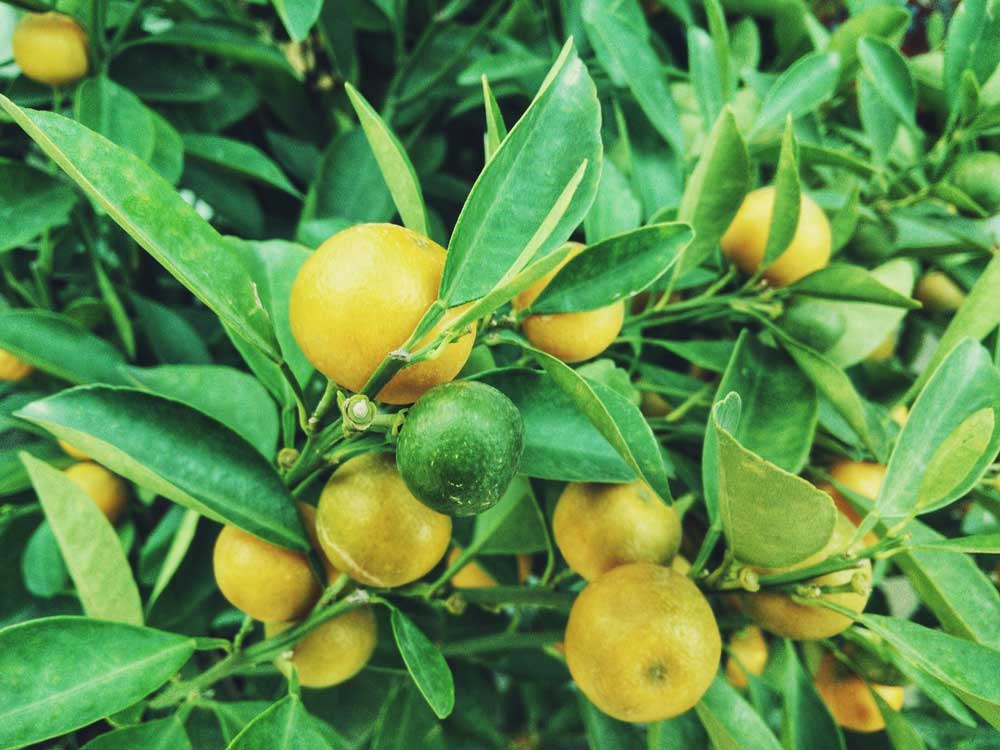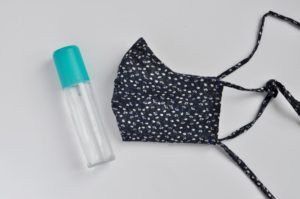How to homemade hand sanitizer with essential oils? Back in March 2020 I was living in Vienna, Austria. Things were starting to shut down, and the store shelves were empty. The only thing that was left in the meat loving Austria was vegan food. Soon to become obligatory masks were nowhere to be found. Hand sanitizers were impossible to get. Pharmacy after pharmacy, nobody had anything left.
Disclaimer: I am not a physician. Always consult your doctor prior to getting advice from a random person online.
Luckily we had some 100% isopropyl alcohol at home that I use for cleaning. Also, if you ever did gel nails at home, isopropyl alcohol is what is used to dehydrate the nails before applying the gel. I had some of that too.
I did some research and here is what I found:
The best antimicrobial efficacy can be achieved with ethanol (60 to 85%), isopropanol (60 to 80%), and n-propanol (60 to 80%). The activity is broad and immediate. Ethanol at high concentrations (e.g., 95%) is the most effective treatment against naked viruses, whereas n-propanol seems to be more effective against the resident bacterial flora. The combination of alcohols may have a synergistic effect. The antimicrobial efficacy of chlorhexidine (2 to 4%) and triclosan (1 to 2%) is both lower and slower.
Kampf G, Kramer A. Epidemiologic background of hand hygiene and evaluation of the most important agents for scrubs and rubs. Clin Microbiol Rev. 2004 Oct;17(4):863-93, doi
WARNING: Never bring alcohol with such high alcohol content into a house with an alcoholic. Drinking such concentrations can be deadly, since humans can’t process such concentrations.
What not to use in a homemade hand sanitizer with essential oils
VODKA OR OTHER SPIRIT
Vodkas and other spirits contain ethanol but is too small concentrations to kill all bacteria and viruses. Vodkas start with a minimum of 37%, most being 40-45% ethanol, which is not enough. The percentage will say on the front or the back of the bottle. In a lot of countries, drinks with such alcohol percentages are illegal
“BURNING ALCOHOL” or “alcohol fuel”
This type is a mix of ethanol and processed methanol, which is toxic.
ACETONE
Do not use ESSENTIAL OILS ONLY in your home formulations
Though there are a couple of essential oils that have been proven to be anti-bacterial, but they are not a good UNIVERSAL kill all ingredient. Let’s see why.
ANTI-BACTERIAL: it kills bacteria like E-coli, food poisoning, wound infections…
ANTI-VIRAL: examples of viral infections hepatitis B, SARS, measles, Ebola, herpes, HIV, and now covid
ANTI-FUNGAL: it kills fungi, like mold
In “folks medicine” these terms are often used as synonyms – but they are not. Most studies look at bacteria and essential oils, and there needs to be more research.
What is ANTI-MICROBIAL then? Microbe nowadays gets to be used as a general term for anything yucky that might make us sick. However not all microbes are bad, as not all bacteria is bad. Microbes are bacteria, fungi and other, plus maybe viruses, depending who you ask. So if you are looking at a study claiming an ingredient is anti-microbial, check their definitions and exclusions.
Soap kills stuff very well. It’s crazy to believe something as simple and basic as soap can be that effective. But we are making a homemade hand sanitizer with essential oils now, so let me stay focused.

How do essential oils work on viruses?
Excellent article here and a shorted condensed 4 point version below.
ANTI-VIRAL is not equal to VIRUCIDAL. Anti-viral means the virus just stops reproducing and virucidal means sth. kills the virus. When we are making a hand-sanitizer at home, or buying it in the pharmacies (when available), we are looking to make it virucidal.
We actually know very little about essential oils and viruses. Most research with EO has been on skin conditions caused by viruses.
Another problem: all viruses are different and respond differently to different environments and ingredients.
In vitro research (in a test tube) doesn’t represent real life. More tests are needed.
Additional thoughts on using EOs in DIY hand sanitizers
In addition, essential oils can be very irritating for some people (immediately or with prolonged use), so be mindful. in case of irritation, stop using the hand gel and/or decrease the quantity.
Plant medicine is a very potent, however, the potency and efficacy of an individual plant varies based on mode of extraction, meaning drinking tea, essential oils, distillation, maceration… all produce a different result. The region or growth, quality and preservation all effect the final result.
This doesn’t means essential oils have no place disinfecting formulas. Especially in homemade formulas, they round up the formula making it more effective (especially if you are making the concentration of alcohol closer to 60%), have beneficial aromatherapy benefits and act as a preservative, though the alcohol should be concentrated enough to prevent spoilage.
For a general diy hand sanitizer formulating based on essential oils could be enough, but isn’t DEFINITELY NOT ENOUGH when dealing with viruses.
Good all round disinfecting essential oils
TEA TREE: Tea tree is one of the more studied essential oils and has been proven to be anti-fungal, anti-bacterial and anti-viral for some viruses.
OREGANO source
CLOVE source
Potentially also lavender, basil, clary sage, and arborvitae.

Essential oils reducing anxiety
- lavender (Lavandula angustifolia) and rosemary source
- sweet orange (Citrus sinensis) source
- lemon (Citrus limon) or other citrus that you might have readily available like mandarine or yuzu
Formula for homemade hand sanitizer with essential oils
for 100 ml (3.4 oz)
Hand sanitizer spray:
- 70 ml of 100% alcohol ethanol or isopropyl alcohol
- 30 ml water (or 20 ml water + 10 ml glycerin)
- 6 drops of essential oil, I like to do 3 drops of tea trea oil and 3 drops of lavender
Shake vigorously and put in a spray bottle. This formulation would last a long time – alcohol kills.
My hands are currently not dry with this formula (I will update in the winter). I use this sanitizer every time I go out, but I do not use it constantly like nurses or shopkeepers would).
I like to use a spray, I find it easier and it leaves no gluey residue on my hands. I can then also just spray down a table, door handle or spoon at a cafe for example. I make a fresh refill every time I need it, possibly at a 2 week mark, depending on what I’m doing.
I use a thin glass bottle, repurposed from my old deodorant which fits into my purse or basket well.

Hand sanitizer gel:
- 70 ml of 100% alcohol ethanol or isopropyl alcohol
- 30 ml aloe vera (or glycerin)
- 12 gr xanthan gum
- 6 drops essential oil
I love working with xanthan, it’s a very funky fun ingredient, but it might cause you some trouble if you aren’t used to it.
Mix alcohol and aloe (or water). Sprinkle xantham gum in the water (or aloe) and gently dap it around to moisten it evenly. Wait for about 5 min for xanthan to re-hydrate. If you mix too fast, you will get a lumpier gel. You will see xanthan expand and then you whisk or mix vigorously (if you do not have a small whisk). Wait a couple more minutes and whisk some more.
Note that aloe vera is there for moisturizing effect, not thickening. It might make your hands a bit sticky, depending on which brands you use. I have tried fresh and bottled aloe vera gel and didn’t find it as moisturizing to be worth the stickiness and higher price.
Optimal ingredients for hydration:
Small quantities of
– vitamin E
– panthenol (vit B5)
– squalane
These are all moisturizing and not water soluble, so they would only work in small quantities in the gel formula, since xanthan gum emulsifies/stabilizes a bit. You cannot add oils without adding additional emulsifiers which then changes the formula and ads to the price and hassle.
You might also like: my DIY deodorant without baking soda recipe
Where do I buy alcohol ethanol, isopropyl alcohol, and the rest of it for a homemade hand sanitizer?
- local pharmacy
- old school “drogerie” type, in Europe there are still these multi-purpose small shops where they sell tons of seemingly random things for households
- in Vienna, I could go to a chemist that works with individuals, not only bigger companies
- gel nail online suppliers for isopropyl alcohol
- Aromazone for xantham gum, glass and recycled plastic spray bottles (delivery all over Europe)
- Iherb for aloe vera gel, xantham and essential oils: use code NTN955 for 5% off on first and repeated purchases (worldwide delivery with non-inflated shipping fees)

